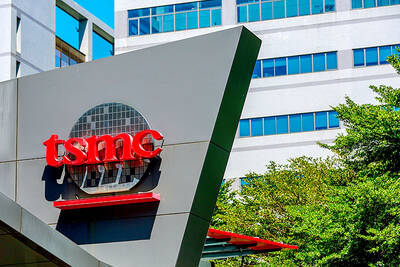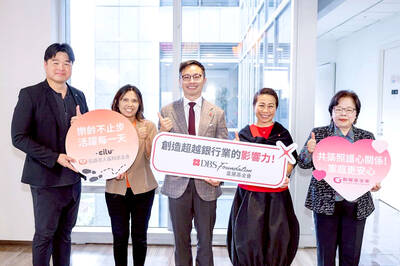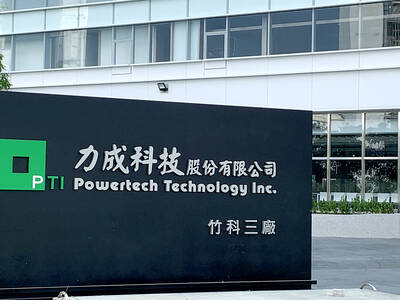Toyota Motor Corp is to launch an all-electric small sedan in China late next year, having turned to local partner BYD Co (比亞迪) for key technology to finally make an affordable yet roomy runaround, four sources said.
Two of the four people with knowledge of the matter described the car as an electric holy grail for Toyota, which has struggled for years to come up with a small electric vehicle (EV) that is competitive on cost in China and does not compromise on comfort.
The sources said the breakthrough was chiefly down to BYD’s less bulky lithium-iron-phosphate (LFP) Blade batteries and its lower-cost engineering know-how — a turning of the tables for a Chinese company whose popular F3 saloon was inspired by Toyota’s Corolla back in 2005.

Photo: Reuters
Little known outside China at the time, BYD, or “Build Your Dreams,” hit the headlines in 2008 when Warren Buffett bought a 10 percent stake and it has since become one of the biggest manufacturers of so-called new energy vehicles in the world.
Toyota’s new EV would be slightly bigger than its compact Corolla, the world’s best-selling car of all time.
It is to be unveiled as a concept car at the Beijing auto show in April and will then most likely be launched as the second model in Toyota’s new bZ series of all-electric cars, even though it will only be on sale in China for now.
“The car was enabled by BYD battery technology,” one of the sources said. “It has more or less helped us resolve challenges we had faced in coming up with an affordable small electric sedan with a roomy interior.”
It would be pitched below premium EVs, such as Tesla’s Model Y or the Nio ES6, but above the ultra-cheap Hong Guang Mini EV, which starts at just US$4,500 and is now China’s best-selling EV.
Two of the four sources, all of whom declined to be named because they are not authorized to speak to the media, said the new Toyota would be priced competitively.
One said it would likely sell for under 200,000 yuan (US$31,400), aiming for a segment of the Chinese market Tesla is expected to target with a small car within the next two years.
“We don’t comment on future products,” a Toyota spokesperson said. “Toyota considers battery electric vehicles as one path to help us get to carbon neutrality and is engaged in the development of all types of electrified vehicle solutions.”
A BYD spokesperson declined to comment.
Two of the sources said the BYD evaluations pushed Toyota to create its research and development (R&D) joint venture with BYD last year. Toyota now has two dozen engineers in Shenzhen working side-by-side with about 100 BYD counterparts.
BYD officially launched its Blade battery last year.
LFP batteries have a lower energy density than most other lithium-ion cells, but are cheaper, have a longer shelf-life, are less prone to overheating and do not use cobalt or nickel. Tesla already uses LFP batteries in its Model 3 and Model Y in China.

Taiwan Semiconductor Manufacturing Co (TSMC, 台積電) has secured three construction permits for its plan to build a state-of-the-art A14 wafer fab in Taichung, and is likely to start construction soon, the Central Taiwan Science Park Bureau said yesterday. Speaking with CNA, Wang Chun-chieh (王俊傑), deputy director general of the science park bureau, said the world’s largest contract chipmaker has received three construction permits — one to build a fab to roll out sophisticated chips, another to build a central utility plant to provide water and electricity for the facility and the other to build three office buildings. With the three permits, TSMC

The DBS Foundation yesterday announced the launch of two flagship programs, “Silver Motion” and “Happier Caregiver, Healthier Seniors,” in partnership with CCILU Ltd, Hondao Senior Citizens’ Welfare Foundation and the Garden of Hope Foundation to help Taiwan face the challenges of a rapidly aging population. The foundation said it would invest S$4.91 million (US$3.8 million) over three years to foster inclusion and resilience in an aging society. “Aging may bring challenges, but it also brings opportunities. With many Asian markets rapidly becoming super-aged, the DBS Foundation is working with a regional ecosystem of like-minded partners across the private, public and people sectors

RUN IT BACK: A succesful first project working with hyperscalers to design chips encouraged MediaTek to start a second project, aiming to hit stride in 2028 MediaTek Inc (聯發科), the world’s biggest smartphone chip supplier, yesterday said it is engaging a second hyperscaler to help design artificial intelligence (AI) accelerators used in data centers following a similar project expected to generate revenue streams soon. The first AI accelerator project is to bring in US$1 billion revenue next year and several billion US dollars more in 2027, MediaTek chief executive officer Rick Tsai (蔡力行) told a virtual investor conference yesterday. The second AI accelerator project is expected to contribute to revenue beginning in 2028, Tsai said. MediaTek yesterday raised its revenue forecast for the global AI accelerator used

BREAKTHROUGH TECH: Powertech expects its fan-out PLP system to become mainstream, saying it can offer three-times greater production throughput Chip packaging service provider Powertech Technology Inc (力成科技) plans to more than double its capital expenditures next year to more than NT$40 billion (US$1.31 billion) as demand for its new panel-level packaging (PLP) technology, primarily used in chips for artificial intelligence (AI) applications, has greatly exceeded what it can supply. A significant portion of the budget, about US$1 billion, would be earmarked for fan-out PLP technology, Powertech told investors yesterday. Its heavy investment in fan-out PLP technology over the past 10 years is expected to bear fruit in 2027 after the technology enters volume production, it said, adding that the tech would